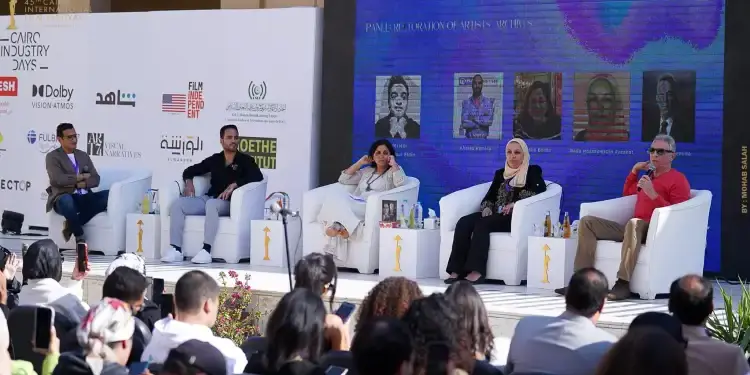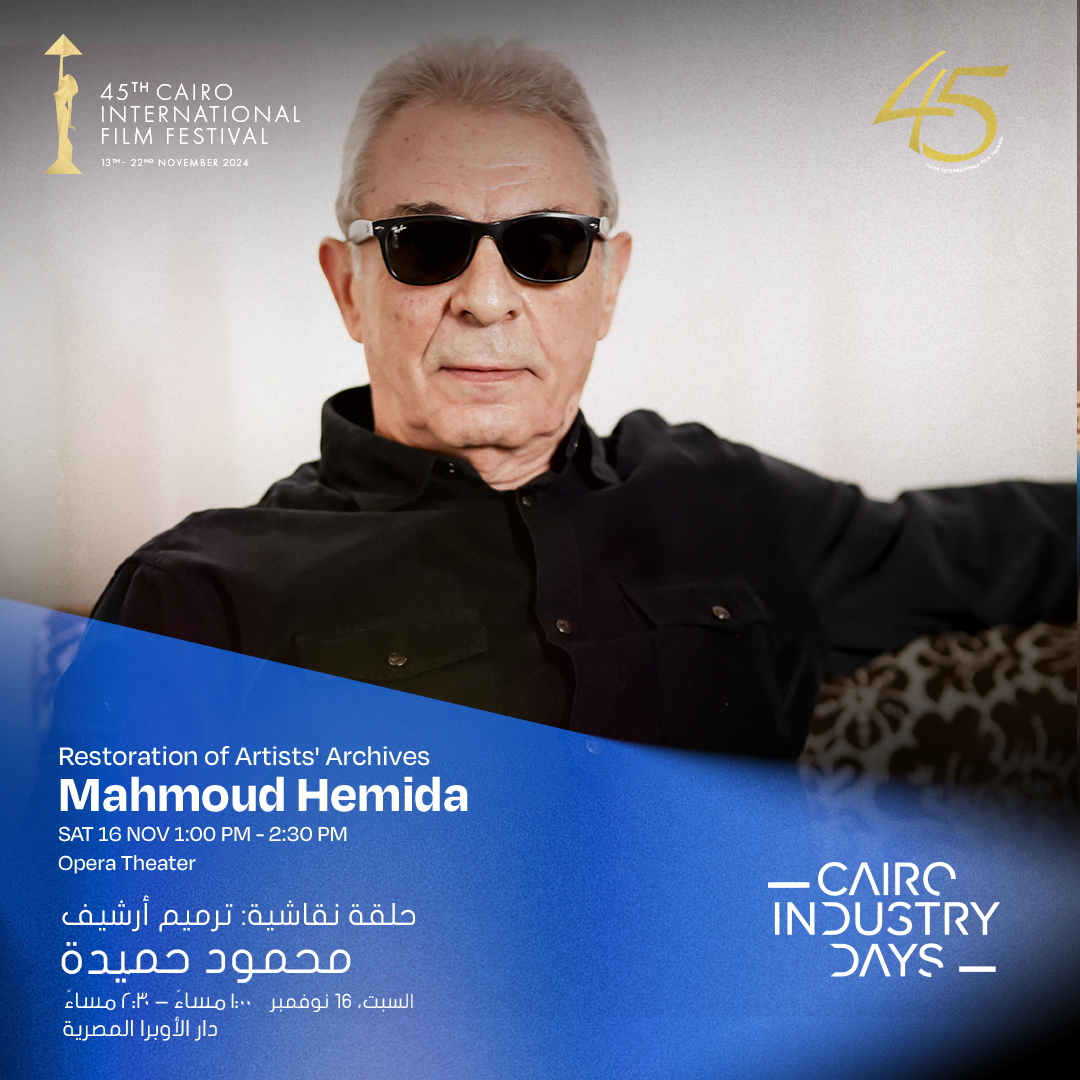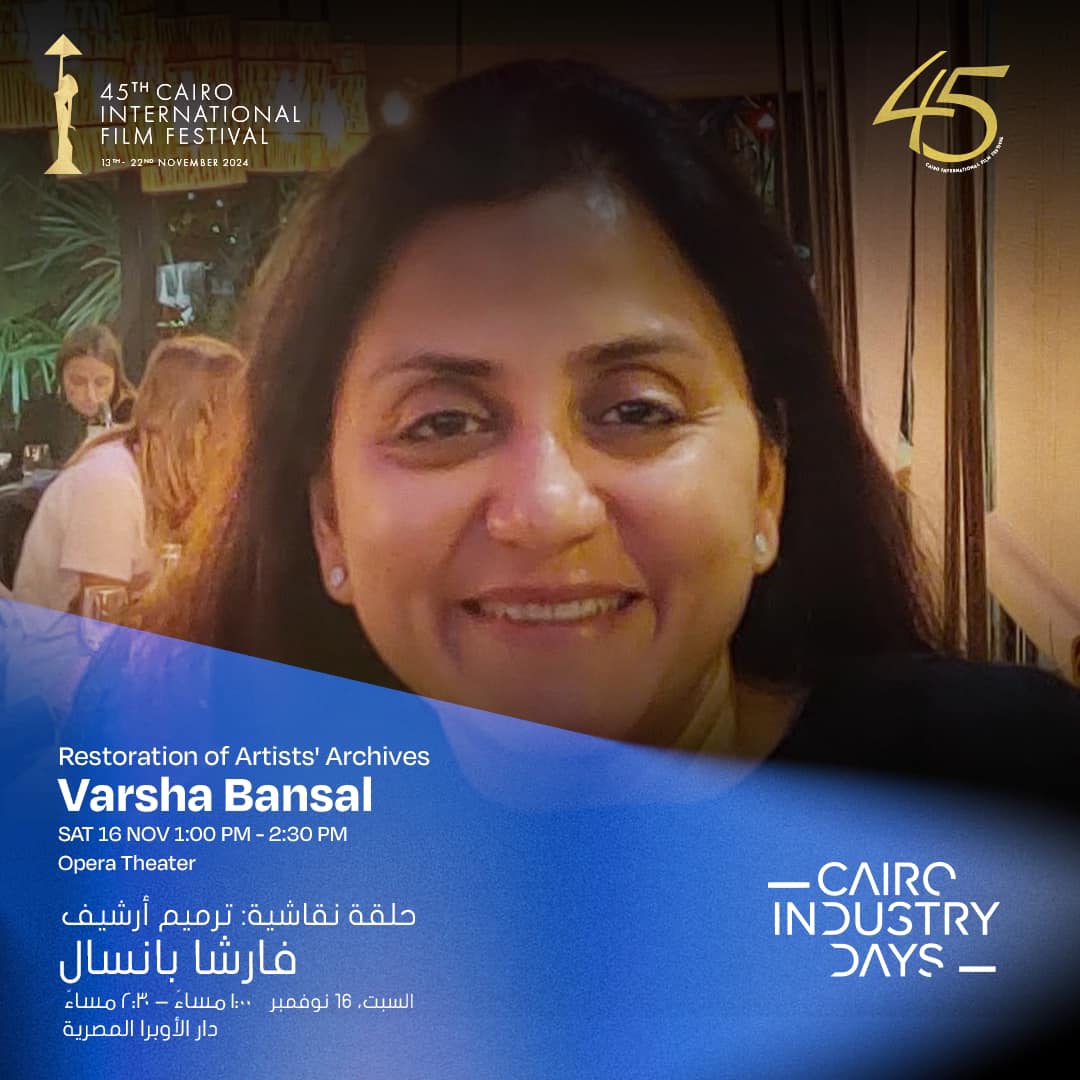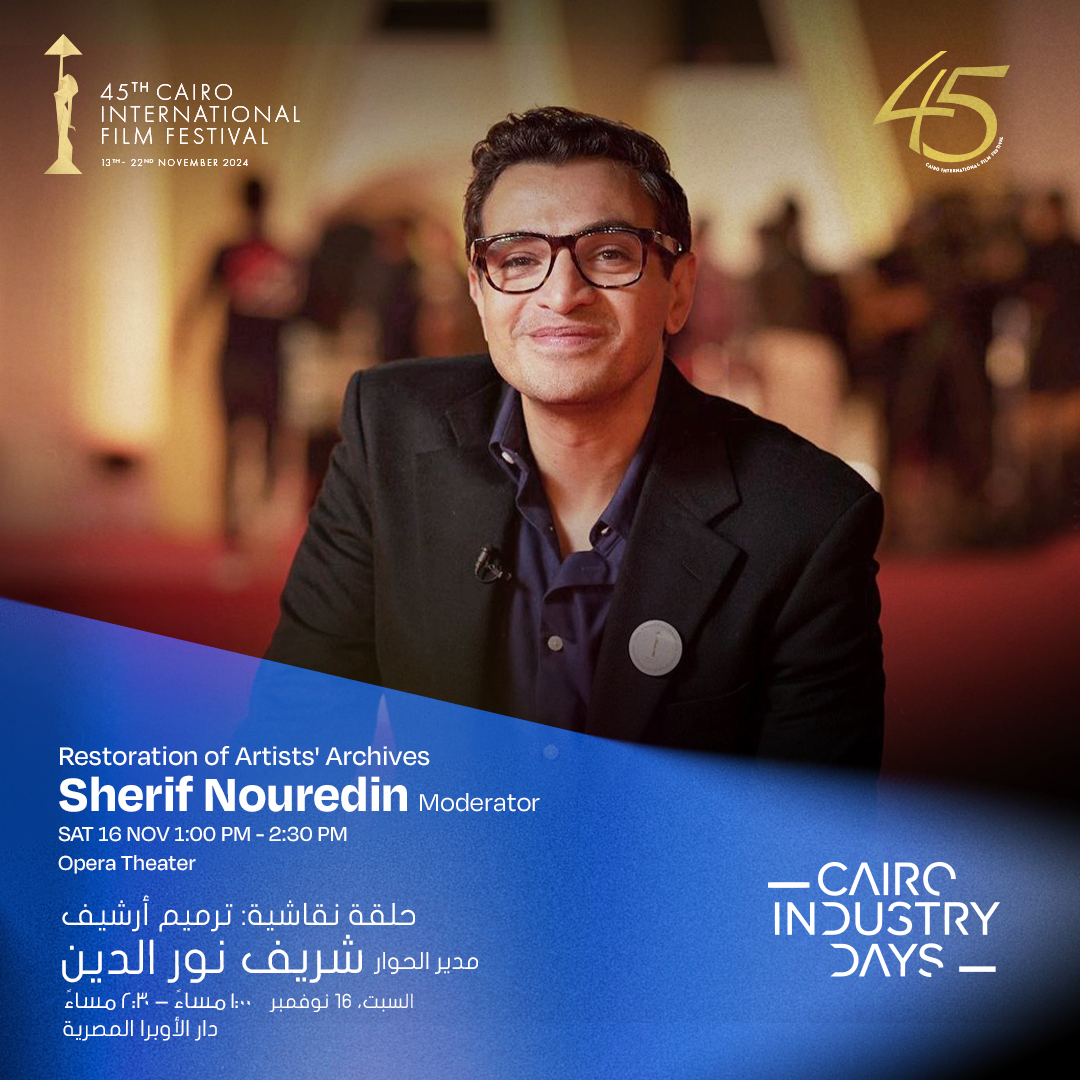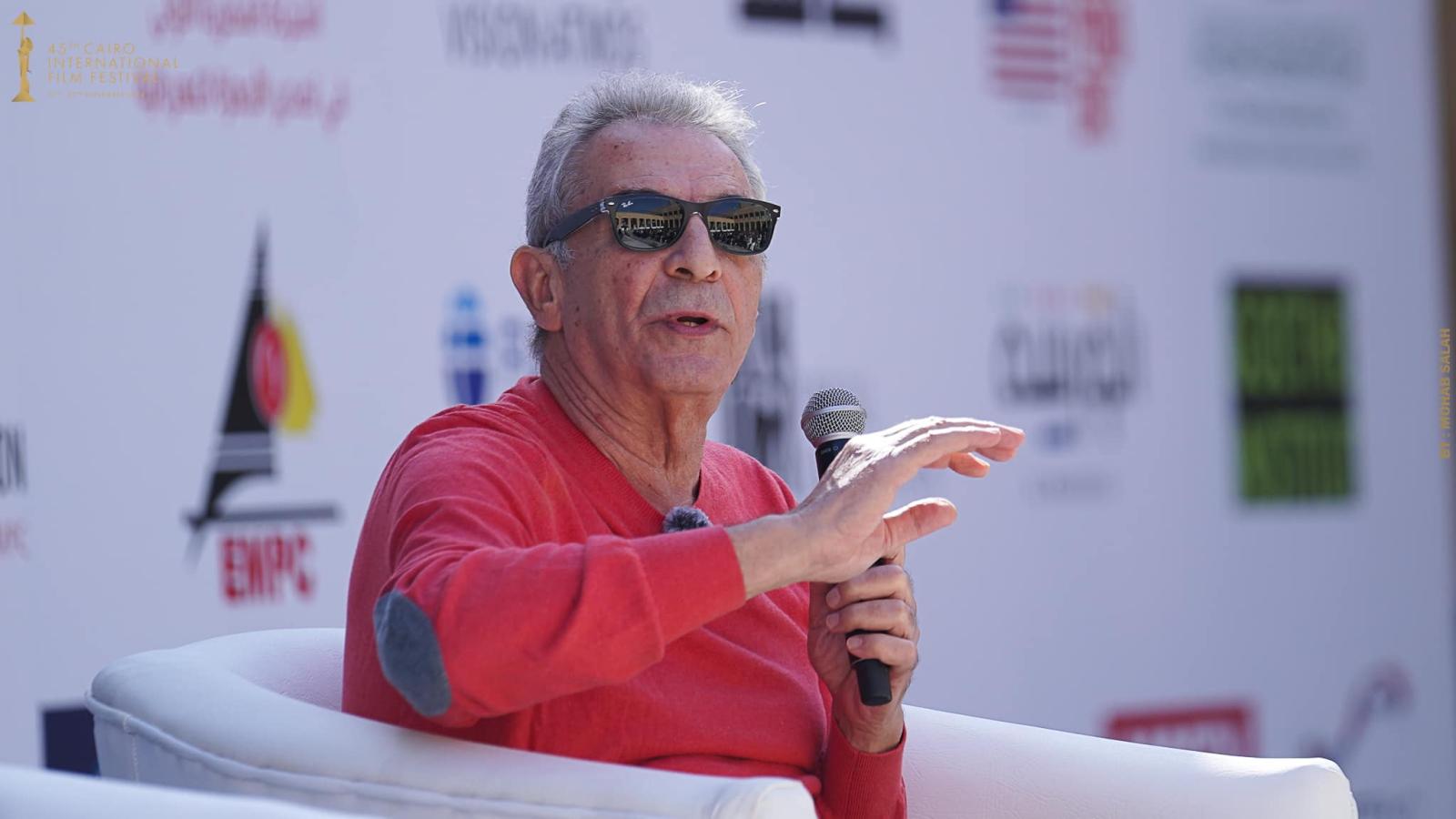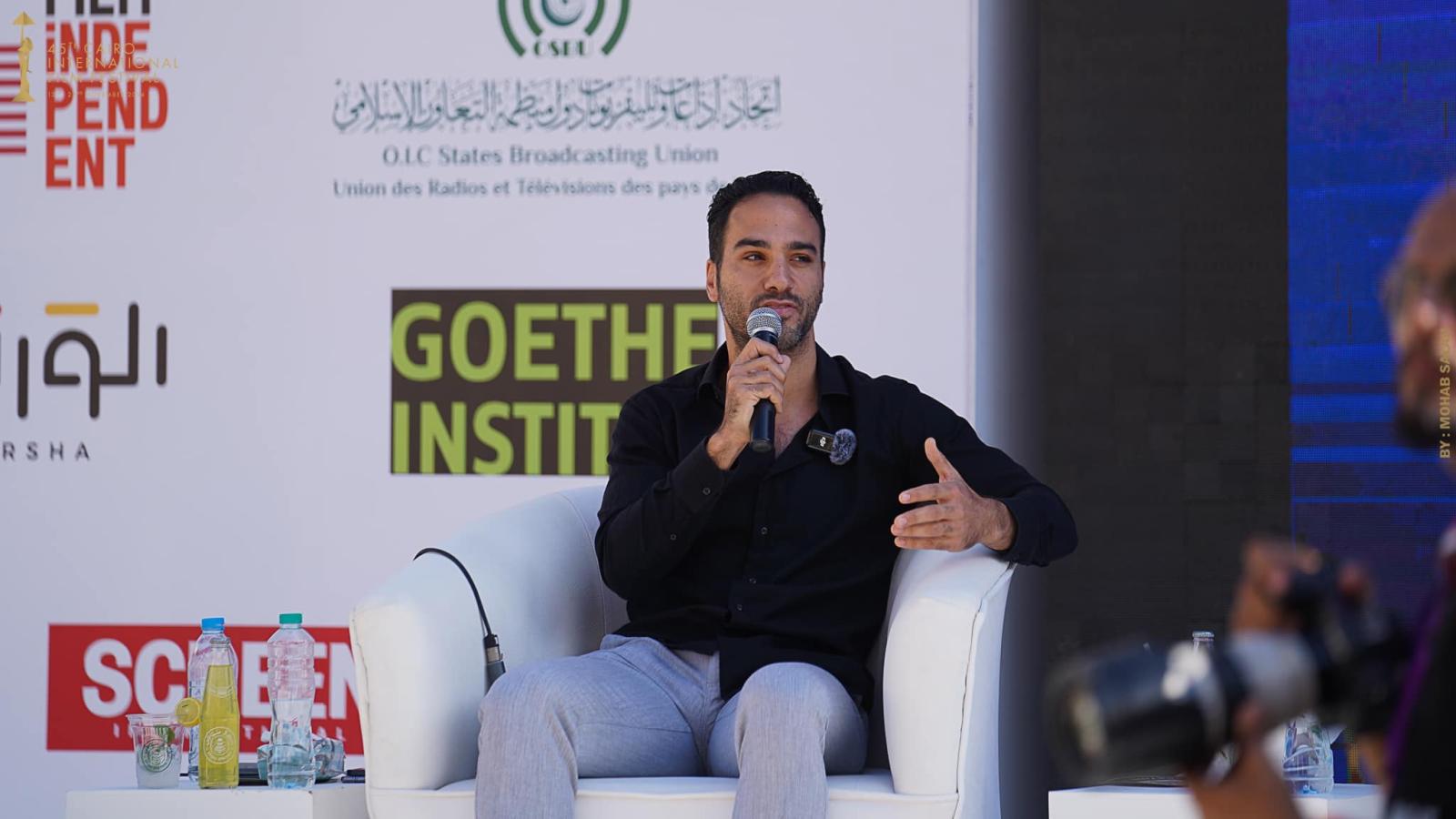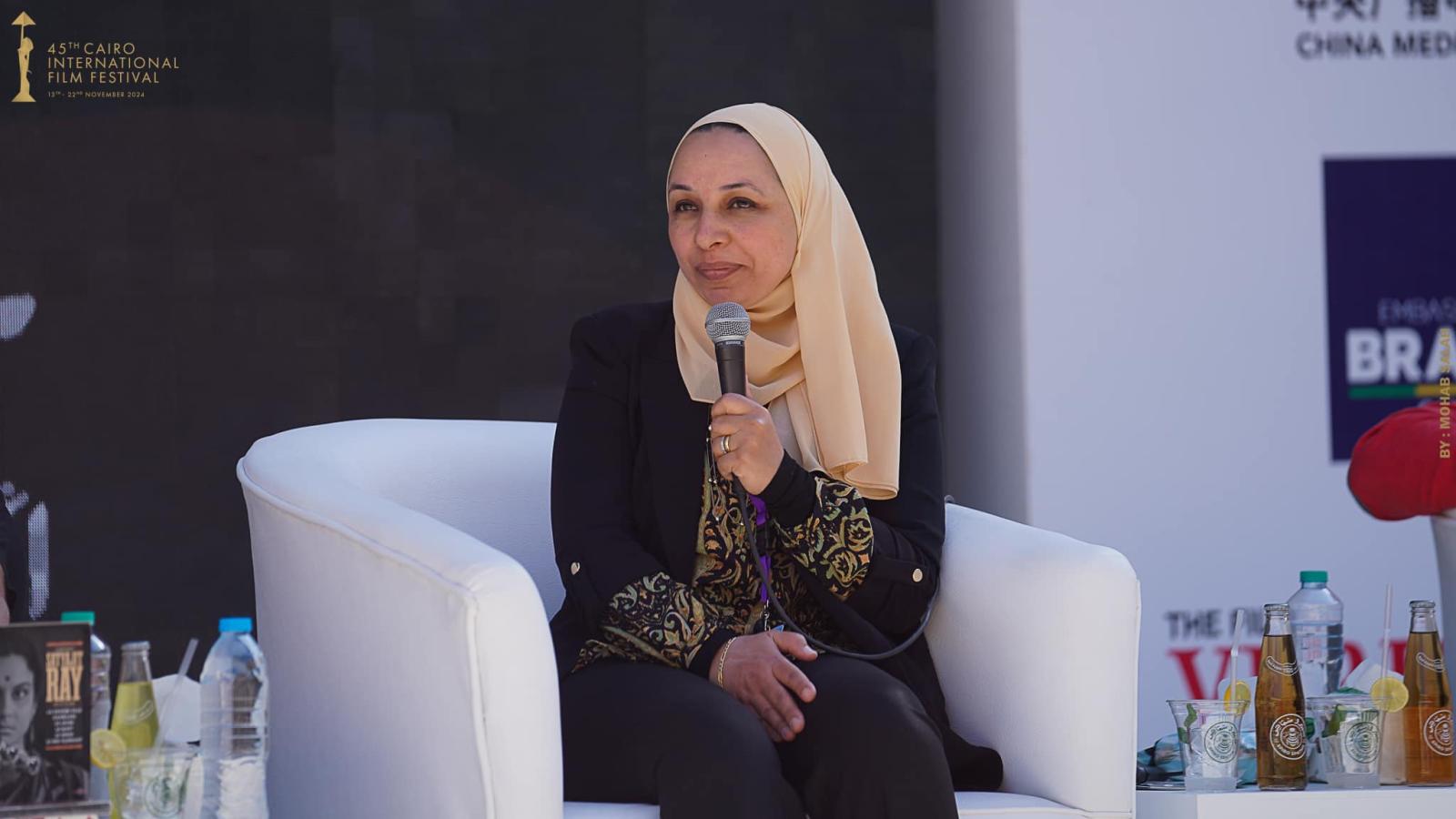During the 45ᵉ edition of the Cairo Film International Film Festival (CIFF), which is held from November 13 to 22, 2024, a panel entitled Restoration of heritage and the history of artists Has gathered personalities of cinema to debate challenges and opportunities linked to the conservation of artistic and cinematographic archives. This panel, moderated by Sherif Noureldin, a renowned TV host, brought together the Egyptian actor Mahmoud Hemeda, his son Khaled Hemeda, CEO of Digitized, Nada Hossam El Dine Farahat, president of the Egyptian Center for Cinematographic Restoration, and Rhasha Bansa, responsible for the restoration of films in India. These rich exchanges have revealed universal issues and local initiatives that are part of an essential approach to preserving heritage.
The fight for the archives: the alert cry of Mahmoud Hemeda
Mahmoud Hemeda opened the debate with a bitter criticism of the absence of archival culture in Egypt. He denounced what he calls a “fight against archives”, a mentality which slows down the preservation of artistic works and heritage in general. “” Since my childhood, I have never found books that document the life of Egyptian artists “, He underlined with regret.
The actor recalled that Egypt, although it has one of the richest cinematographic stories in the world, has no cinematheque or structured system to archive audiovisual works. This absence led to irremediable losses, as during the celebrations of the centenary of Egyptian cinema, where it was found that around 2000 Egyptian films had disappeared, sometimes destroyed for trivial reasons. For example, heirs sold film negatives to jewelers to extract precious metals, illustrating the extent of negligence and ignorance in the face of these cultural treasures.
To remedy this situation, Mahmoud Hemeda got personally involved in a digitalization project initiated by his son Khaled. The latter first wanted to constitute archives to preserve his father’s career. From this family approach, the idea has extended to other living artists. Khaled Hemeda began to bring together biographies, personal documents, and even audiovisual works belonging to these artists, taking advantage of their presence to ensure direct collection. However, this project encounters obstacles: only half of artists and families are cooperative. Some do not perceive the interest of such an effort, while others fear that these archives will be exploited without their consent or compensation.
The legal problem in Egypt: an obstacle to the preservation of archives
Another problem raised during the panel concerns the status of the personal property of artists in Egypt. Unlike other countries, these goods – letters, costumes, accessories, various documents – are private property and remain under the control of families. The latter, either by disinterest, or for fear that these objects be used at their detriment, do not give priority to their preservation.
Mahmoud Hemeda pleaded for the establishment of a clear legal framework which would allow the State to protect these archives while respecting the property rights of families. For example, a law could oblige families to deposit these objects in public institutions for their conservation, while guaranteeing them legal property. Khaled Hemeda also proposed to digitize these archives and restore the originals to families, but this initiative remains insufficient without a structuring legal framework.
An isolated example: the Shadi Abdessalem space at the Alexandria library
The case of Shadi Abdessalem, a mythical Egyptian filmmaker, is a rare exception in the conservation of artistic archives in Egypt. Mahmoud Hemeda told how Salah Marei, one of the biggest movie decorators, had the idea of creating a dedicated wing to the director in the Alexandria library. This space brings together personal effects, documents and objects linked to the work of Shadi Abdessalem, allowing the Egyptian and international public to access this precious memory. However, Mahmoud Hemeda regretted that Salah Marei himself, despite his immense contribution to the cinema, did not benefit from such treatment for the conservation of his own journey.
The Egyptian cinematographic restoration center: an essential but insufficient initiative
Nada Hossam El Dine Farahat presented the work of the Cinematographic Restoration Center, founded in 2018 to respond to the urgency of preserving Egyptian historical films and documents. One of their first projects was the restoration of the documentary series Jaridet Masr El Cinemayaretracing the news from the time of King Farouk until 2013. It was only later that the restoration of films began, a demanding work which made it possible to save nearly 60 films to date, but Nada insisted on the difficulties encountered: each restoration is a slow and costly process, requiring careful treatment of images and soundtracks.
She also underlined a fundamental problem: access to films. In Egypt, many original films are lost, forcing restaurateurs to turn to damaged copies that are sometimes in private moviegoers who keep negatives. The Center collaborates with institutions like Art and the Ministry of Culture, but these efforts remain fragmentary.
Indian example: exemplary management of archives
Rhasha Bansa, responsible for catering in India, brought a contrasting point of view. In India, the conservation of archives is a national priority. Producers are responsible for costumes, accessories and documents related to their films, thus ensuring centralized and efficient management. In addition, the country has many public cinematheques and cinematographic museums, distributed in major cities, which preserve this heritage for future generations.
Rhasha spoke of initiatives such as the platform Heritage Online, Launched by the Locarno Festival, which connects festivals programmers with restored films. These works, now accessible to a large audience via digital or physical supports, also generate income thanks to the marketing of DVD boxes, often enriched with unpublished documents.
Learn foreign models to preserve and enhance collective memory
The preservation of artistic archives exceeds the simple safeguard of a cultural heritage; It can become a source of inspiration, education and even income. If Egypt encounters many difficulties in organizing and protecting its heritage, international models show that these issues can be noted thanks to a well -defined strategy and a collective will.
In France, the Cinémathèque française preserves and enhances a vast heritage: films, posters, costumes, and accessories. Through exhibitions and retrospectives, she is not content to preserve the history of cinema but makes it accessible to the general public. In the United States, the Oscar Museum offers an immersive experience that combines preservation and spectacle. The iconic costumes, filming accessories and objects linked to the big names in cinema are exhibited there in captivating courses. These institutions are not only places of memory, they also generate significant income thanks to ticketing, cultural collaborations and the marketing of derivative products.
In Egypt, the situation is different. Ordinary costumes generally belong to the actors themselves, while the costumes of historical films are the responsibility of the producers. Thus, many objects that have marked significant filming are found in the houses of artists or their families. These families, in the absence of an institutional or legal framework, poorly retain these treasures which often end up getting lost, be sold or thrown away. However, these archives could not only enrich the history of Egyptian cinema but also find a new life in museums or temporary exhibitions.
A marking Egyptian example is the OM Kalthoum museum, which retains personal effects, clothing and accessories of the legendary singer. This museum is a popular destination for lovers of history and culture, offering a model for enhancing the personal objects of artists. If the archives of major filmmakers, directors, or actors were collected and exhibited, this could not only transmit the history of cinema but also attract local and international visitors.
Abroad, the exhibitions of costumes and accessories linked to famous films are frequent. They are often accompanied by contextual analyzes and stories, attracting cinema enthusiasts and curious. In addition to their cultural and educational contribution, these events generate income, whether by ticket office, the rental of objects to other institutions or the creation of derived digital content.
Egypt, a country with cinematographic history among the richest, could be inspired by these practices by creating a museum dedicated to the cinema and organizing retrospectives. Such an initiative could include the collection of historic costumes and accessories belonging to the families of artists. The challenge would then be to find a legal solution guaranteeing the conservation of these objects while respecting the rights of families.
As Mahmoud Hemeda pointed out, ” the one who has no more past is lost ». Preserving the artistic heritage, whether films, archives or personal effects, is not an option but a necessity. It is a way to build a bridge between generations, to transmit values and stories, but also to create a sustainable cultural industry. By following the example of countries like France or the United States, Egypt could not only protect its heritage but also transform it into living, accessible and valued wealth on a global scale.
The opportunity to recall that in Tunisia, we have had a cinematheque since 2018, but that over the years, films have been lost, and that the Cinema Museum has been closed for very long years, without being able to know if it will reopen its doors one day. The opportunity also to recall that in 2020, the direction of Carthage’s film days had tried to collect the festival archives, themselves scattered, that a long-term job should continue, but has it been?
In fact, Mahmoud Hemeda is right, in our countries, we “fight the archives”, and it’s really a shame!


